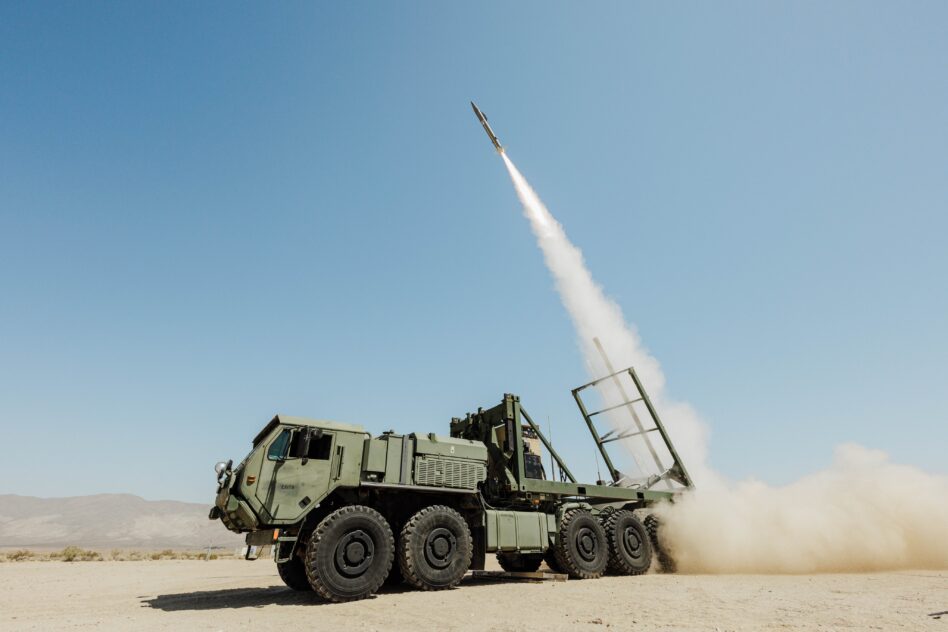Cash-telion: The hype for hypersonics is real. In its FY26 budget, the Army is requesting $25M to develop “Blackbeard” hypersonic missiles made by Castelion—just five months after the California-based missile startup raised $100M in a Series A funding round.
Talk about a hot launch.
Origin story: Castelion was founded in 2022 by three SpaceX alums—Bryon Hargis (CEO), Sean Pitt (COO), and Andrew Kreitz (CFO)—with the mission to produce “affordable, mass-produced hypersonic long-range strike weapons.” Given the present state of America’s hypersonic program, that’s awfully and admirably ambitious.
Where things stand:
- The US began working on hypersonics—which fly more than five times the speed of sound (Mach 5)—in the early 2000s, but ramped things up on the R&D front in the past few years to counter China and Russia’s advances. The US says both rivals have tested or (in Russia’s case) used hypersonics in combat. The US wants to catch up—and fast.
- In true Pentagon fashion, that timeline’s been pushed back a few times. The Army missed its 2023 target to field the technology after testing issues, and the Air Force gave up on its program that was set to debut in 2022. It’s now aiming for 2027 with a new system.
- Hypersonics recently got their sea legs. In May, the Navy pulled off its first successful cold-gas launch—where compressed gas (not combustion) pushes the weapon out of its launch tube before ignition—of its sea-based Conventional Prompt Strike (CPS) hypersonic missile. It aims to integrate that into a Zumwalt-class destroyer by the end of the year.
- And there’s money to be made. The global hypersonic missile market is projected to grow at a Compound Annual Growth Rate of at least 13.4% from 2025 to 2034, growing from $8.5B in 2024 to $30B by 2034. For its part, the Pentagon requested $3.9B in FY26 for hypersonics.
Hypersonics on a budget: So, the Pentagon wants hypersonics, but cost has spiraled absolutely out of control. Enter: Castelion. The company hopes to meet the Pentagon’s demand for low-cost, scalable hypersonic weapons, particularly as Lockheed Martin’s “Dark Eagle” Long Range Hypersonic Weapon (LRHW) costs $41M a pop.
But don’t worry, Lockheed investors. The Army clarified in its request that Blackbeard “is not a replacement to the [LRHW] as it will not reach similar velocities nor range.”
The Legend of Blackbeard: Castelion’s Blackbeard is looking to fit into the “low” end of the “high-low mix” (the $41M/unit Dark Eagle LRHW would be “high”). The missile would offer the Army a cheaper, quick-to-build alternative that can travel shorter distances.
The question is, how are they doing this if the big boys can’t? “Castelion’s development model involves the use of non-traditional supply bases and rapid hardware iteration cycles informed by real-world data captured from frequent ground and flight tests to achieve faster, lower-cost outcomes,” co-founder and COO Sean Pitt told Tectonic.
With more rapid manufacturing and iterative design, Castelion says it can build up hypersonic stockpiles more quickly and cost-effectively.
Long road ahead: The Blackbeard program, according to the Army’s request, will take place over two stages. After each phase, “the Army [has] a clear ‘off-ramp’ should the technology prove immature, ensuring responsible stewardship of taxpayer dollars.” Sounds like someone doesn’t want to get burned again.
- Phase 1: The first step is to “deliver a prototype proof-of-concept, including a fixed-fin flight demonstration of the existing air-launched, extended-range Blackbeard design from a…Multiple Launch Rocket System Family of Munitions (MFOM) pod” before it’s test-launched from HIMARS platforms.
- Phase 2: If Phase 1 is successful and cost-effective, Castelion will produce a near-production-representative version of the weapon, including fully integrated missiles delivered for HIMARS and live-fire flight tests from operational launch platforms.
(Out of curiosity, does the Golden Dome also have an off-ramp?)
Looking forward: The end goal, according to the Army, is “to deliver approximately 80% of the Precision Strike Missile (PrSM) Increment 4 capability at a significantly reduced cost.”
- The Army is fielding the PrSM “Increment 1,” a short-range ballistic missile that can be launched from both HIMARS and MLRS vehicles.
- Still in development, Increment 2 will add new tech that lets the missile hit land or sea targets.
- Increment 3 will focus on new types of payloads, like small glide bombs or loitering drones.
- Increment 4 aims to double the missile’s range from about 310 miles to 620 miles, possibly by adding a ramjet or other advanced propulsion system.
At 80% of the PrSM’s final (projected) capability, the Blackbeard would—busting out the calculator here—have a range of about 500 miles.
Betting on Blackbeard: The Blackbeard project wouldn’t be Castelion’s first rodeo. They’ve won contracts for long-range strike weapon concepts with both the Navy and Air Force worth over $22M, mostly from the latter service.
Still, the missile’s final form is a few years away: They’ve previously set a target of 2027 to produce a finished product. But with big VC backers behind them (including Lightspeed, a16z, and Lavrock) and potential new government funds in their coffers, we’re betting they’re doing everything they can to keep the Army from taking that off-ramp.

